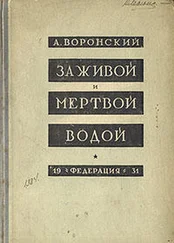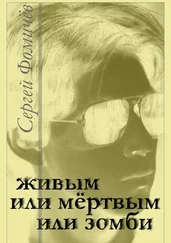133. Tillich, Paul «The Religious Symbol,» Journal of Liberal Religion, 2, 13-33.
134. Tinkelpaugh, Otto L. «Social Behavior of Animals,» Comparative Psychology, ed. F. A. Moss. New York, Prentice-Hall, 1942.
135. Turner, Frederick Jackson. The Frontier in American History. New York, Henry Holt, 1921.
136. Van Doren, Carl C. Benjamin Franklin. New York, Viking Press, 1938.
137. Veblen, Thorstein. The Theory’ of the Leisure Class. New York, Vanguard Press, 1928.
138. Wach, Joachim. Sociology of Religion. Chicago, University of Chicago Press, 1944.
139a. Warner, W. Lloyd. A Black Civilization. A Social Study of an Australian Tribe. New York, Harper, 1937.
139b. –––– «The Society, the Individual, and His Mental Disorders,» American Journal of Psychiatry, 94 (1938), 275-84.
139c. –––– and Lunt, Paul S. The Social Life of a Modern Community . («Yankee City Series», Vol. I. ) New Haven, Yale University Press, 1941.
139d. –––– and Srole, Leo. The Social System of American Ethnic Groups. («Yankee City Series,» Vol. 3.) New Haven, Yale University Press, 1945.
139e. –––– and Low, J. O. The Social System of the Modern Factory. («Yankee City Series», Vol. 4.) New Haven, Yale University Press, 1947.
139f. –––– and Henry, William E. The Radio Daytime Serial. A Symbolic Analysis. (Genetic Psychology Monographs, 37.) Provincetown, Mass., Journal Press, 1948.
139g. –––– Meeker, Marchia, and Eells, Kenneth. Social Class in America. A Manual of Procedure for the Measurement of Social Status. Chicago, Science Research Associates, 1949.
140. Watts, Alan W. Easter, Its Story and Meaning. New York, Henry Schuman, 1950.
141. Weber, Max. The Protestant Ethic and the Spirit of Capitalism, trans. Talcott Parsons. New York, Charles Scribner’s Sons, 1948.
142. Webster, Hutton. «Holidays,» Encyclopedia of the Social Sciences, 7, New York, Macmillan, 412-15.
143. Weckler, Joseph E. Jr. «Ritual Status in Polynesia.» Unpublished Ph.D. dissertation. University of Chicago, 1940.
144. Wecter, Dixon. The Hero in America. A Chronicle of Hero-Worship. New York, Charles Scribner’s Sons, 1941.
145. Wedc.ewood, Camilla H. «The Nature and Functions of Secret Societies,» Oceania, (1930), 129-45.
146. Weeden, William B. Economic and Social History of New England, 1620-1789. Boston, Houghton Mifflin, 1890.
147. Weller, Forrest L. The Changing Religious Sect. A Study of Social Types. Unpublished Ph.D. dissertation. University of Chicago, 1945.
148. White, Leslie A. «The Symbol. The Origin and Basis of Human Behavior,» Philosophy of Science, 7 (1940), 451-63.
149. Whitehead, Alfred North. Symbolism, Its Meaning and Effect . New York, Macmillan, 1927.
150. Whiting, John W. M. Becoming a Kwoma. Teaching and Learning in a New Guinea Tribe.New Haven, Yale University Press, 1941.
151a. Whorf, Benjamin L. «Time, Space and Language,» Culture in. Crisis. A Study of the Hopi Indians, ed. Laura Thompson. New York, Harper, 1950, pp. 152-72.
151b. –––– Language, Thought and Realty . Cambridge, Mass., Technology Press, Massachusetts Institute of Technology, 1956.
152. Wolff, Charlotte. The Psychology of Gesture, trans. Anne Tennant. London, Methuen, 1945.
153. Wright, John K. «Regions and Landscapes of New England,» New England's Prospect 1933. (American Geographical Society Special Publication, No. 16.) pp. 14-49.
154a. Yerkes, Robert M., and Nissen, H.W. «Рrе-Linguistic Sign Behavior in Chimpanzees,» Science, 89 (June 1939), 585-87.
154b. –––– «Social Behavior of Chimpanzees. Dominance between Mates in Relation to Sexual Status,» Journal of Comparative Psychology, 30 (August 1940), 147-86.
155. Young, Pauline V. Scientific Social Surveys and Research. New York, Prentice-Hall, 1949.
156. Zuckerman, Solly. The Social Life of Monkeys and Apes. New York, Harcourt, Brace, 1932.
Приложение У.Л. Уорнер, П.С. Лайт [293] Настоящий текст представляет собой вторую главу из первого тома серии «Янки-Сити» (W. Lloyd Warner, Р. S. Lunt. The Social Life of a Modern Community (Yankee City Series. Vol. 1). New Haven: Yale University Press, 1941. Ch. 2. P. 8-37).
Понятийная схема [294] См.: Социология религии: классические подходы. Хрестоматия. М., 1994. С. 30.
1. Наука, социальные науки и социальные факты
«Древние, — говорит Конфуций, — когда хотели подать пример похвальной добродетели в Поднебесной, прежде всего приводили в гармонию государства. Когда хотели привести в гармонию государства, прежде всего приводили в порядок семьи. Когда хотели привести в порядок семьи, прежде всего приводили в порядок человека. Когда хотели воспитать человека, прежде всего воспитывали свое сердце. Когда хотели воспитать свое сердце, прежде всего пытались быть искренними в мыслях. Когда хотели быть искренними в мыслях, прежде всего преумножали знание. Такое преумножение знания заключено в изучении порядка вещей. Изучался порядок вещей, и знание становилось полным. Знание было полным, и мысли были искренними. Мысли приводились в порядок, и в семьях был порядок. Семьи были в порядке, и государства правильно управлялись. Государства правильно управлялись, и вся Поднебесная пребывала в покое и счастье. Не может быть так, чтобы корнями пренебрегали, а из них бы выросло что-нибудь упорядоченное ».
Современный человек тоже пытался преумножить свое знание посредством «изучения порядка вещей» и, исследуя окружающий мир, «воспитать свои корни». Применяя знания, получаемые в результате изучения природы вещей, он время от времени пытался создать хорошо упорядоченную жизнь для себя, своих современников и будущих поколений.
Читать дальше








![Lutea - Живые и мёртвые [СИ]](/books/397157/lutea-zhivye-i-mertvye-si-thumb.webp)



